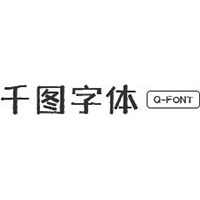ScreenFonts: Gangster Squad, LUV, The Last Stand, John Dies At The End

Yesterday the ScreenFonts posts – also have an last summer. Personally I favoured a year ago, because it is so incredibly well-designed. Another standout poster is the winner in the Best Horror Movie Poster category – In Their Skin cleverly and subtly captures the concept of the film: one family trying to take over the lives of another. The Worst Movie Poster category is a guilty pleasure; unsurprisingly the poster for The Twilight Saga: Breaking Dawn – Part 2 won (lost) this year. And if your thirst for schadenfreude hasn't been quenched yet, read through the amusing Not So Serious Awards, which "take a humorous look at some of the highlights, lowlights, or just plain oddities in the movie poster world from the past year." This episode of ScreenFonts has two posters which would fit very well in this last category – we begin with Best Interpretation of Work by A Contemporary Artist, and end with Most Tasteful Sexploitation Poster.
The (main?) poster for $ellebrity uses a rather straightforward formula to visualise the documentary's theme – a movie star stops and strikes a pose on the red carpet, braving the onslaught of the countless flashes from the paparazzi. The star in the counter of the ITC Avant Garde Gothic 'R' nicely complements the not-so-original dollar sign as a typographic pun. My only quibble is that the star is positioned a smidgen too high.
This alternate design however crosses over to the world of contemporary art to get its message across, by adopting the style (visually and conceptually) of Barbara Kruger. In her work the feminist conceptual artist combines existing photographs overlaid with captions in white-on-red commenting on politics and social issues. I couldn't find any information on who is responsible for this poster, and I was a little surprised I neither found anyone else who'd made the Barbara Kruger connection as well. Just like Kruger's work, the poster overlays black-and-white imagery with bold Futura knocked out of a red band. The elements that make me doubt this poster was created by the artist herself is that the image is not photographic, and I have never known her to use all caps typography with a black shadow behind the white letters. A tribute, a lazy rip-off, or an amazing coincidence?
Suitably trashy is the redneck design for the "Southern whip-ass extravaganza" The Baytown Outlaws (originally called The Baytown Disco according to this early teaser poster). Recreating the confederate flag by panting in red, white and blue an arrangement of guns and bullets leaves little to the imagination. The wide slab serif is the Wild West-inspired Adobe Original Blackoak from the original 1989 Adobe Wood Type volumes.
Also steeped in lowbrow culture is this movie poster for Sushi Girl referencing 70s exploitation film advertising. Although the imagery is actually rather refined, the execution suits the atmosphere – a high-contrast, stylised image rendered in two flat colours black and red with the requisite blood splatters and a concentric circle pattern conjuring up a subtle sense of vertigo. The yellowed paper and dirty background further enhance the trashy style, while the (sort of) Bauhaus-inspired Blippo and the three-dimensional display face ITC Pioneer add the correct typographic zest.
This alternate poster drags the poster into pulp literature cover territory. Despite the addition of flames and exploding cars this design is atypically static: all the elements remain safely enclosed within the border around the illustration, save a timid tiny triangle from the van propelled through the air.
Also referencing illustrated pulp covers and featuring fire and guns, the movie poster for Gangster Squad does a better job at (literally) breaking out – Ryan Gossling's hand, Sean Penn's hair and Josh Brolin's gun invade the surrounding blue border, and a sultry Emma Stone is even positioned in front of the imaginary image plane.
The time period and location of the film (1949 Los Angeles) is suggested through the choice of typeface by a typical Art Deco display sans. Although the weight doesn't seem to match, the letters are almost identical to Romeo. David Berlow based its design on the Estrecha Fina weight of Electra, designed by Carlos Winkow circa 1940 for the Fundición Tipográfica Nacional of Madrid, the leading type foundry in Spain. Jason Castle digitised a similar design by Winkow and named it Carlos after the German type designer who spent most of his working life in Spain. Casablanca, designed by Steve Jackaman for URW, also offers non-condensed widths for this specific style. See also Bodega Sans Oldstyle which adopts numerous ideas from the high period of Art Deco; Newport Land originally designed by William T. Sniffin in 1932; and Blakely which Mark Simonson based on the logotype of the Signals mail order gift catalog he designed in 1993.
The movie poster for LUV is a model of appropriateness and restraint. Adapting the hues in the introspective photograph gives it the appearance of a vintage jazz sleeve, which makes me regret the typography is pretty pedestrian – a horizontally stretched wide grotesque, most probably Neue Helvetica Extended. Although I wish the typeface had been a more interesting one, the positioning is very thoughtful. The 'V' nicely supports Common's legs, mirroring his folded hands, while Michael Rainey Jr. sits on the 'U' with his legs snugly fit between the 'L' and the 'U'. A very beautiful poster.
Even more than in the previous poster, the spirit of Reid Miles lives in this Blue Note Records' iconic art director's signature style, even though the perfectly centred composition is atypical. The cut-out of the main characters in front of the large image is impeccably crisp, with the sunlit figures nicely contrasting against it.

More vintage album sleeve influences are apparent in the poster for Greenwich Village: Music That Defined a Generation, a film exploring the music scene in Greenwich Village, New York in the 60s and early 70s. The hand-drawn bouncy serif face fits the illustration style; the tagline in all-caps Helvetica less so.
Again a bizarrely un-dynamic poster for the action movie The Last Stand. Despite the firing of the Gatling-type gun both Schwarzenegger and Knoxville look like they are playing a not-so-exciting video game in the comfort of their living room. The tilted Neue Helvetica Bold Extended Oblique is trying its best to add some action but is fighting a lost battle.
On the teaser poster Arnie does his best Clint Eastwood impression. Inserting 'THE' in the space between the 'L' and 'A' in the movie title set in Agency is actually not a bad idea.
Finally the Comicon-themed poster adds shooting, explosions, helicopters and a flying car, a smattering of casualties and fast fonts to spice things up.
The illustrative style and Futura Extra Bold in perspective gives the movie poster for John Dies at the End an early Star Wars flavour, yet the dispersement of the design elements and general lack of focus make it somewhat of a mess.

Reprising design motifs which we have seen used previously for The Rum Diary and Eat Pray Love, the teaser poster spells out the film title with objects. The resulting image looks suitably sinister.
In tune with the movie's violence, the characters in the teaser posters are gruesome custom-made weapons. Though not identical, the distressed serif face is very similar to MVB Gryphius, digitised by Otto Trace (wink wink nudge nudge) from types used by Sebastian Gryphius in Lyon in the early 16th century.
What better way to promote a rock documentary about recording studio Sound City than by showing a big fat sparkling blue amplifier front and centre on its movie poster, with the film title stencil painted in a skyline sans in true rock'n'roll fashion? Love the colour palette.
We end this episode with work that was spontaneously submitted to me, something I wish would happen more often. Both posters below were designed by Corey Holms, awarded graphic designer and friend of The FontFeed, probably best-known for his design of The Sopranos logo whose simple substitution of a pistol for the 'r' has become a cultural icon.

The first poster is for KK (The Girl with The Dog), a Swedish short feature about young love and the first confused steps towards a sexual identity. Two hand-drawn capital Ks are overlaid on a desaturated photograph in pink hues of the main character, lending the poster an intimate atmosphere appropriate to the film's tone and subject matter. The type for the billing and English title is a custom font designed by Corey to match the title. As the job was given to him a mere two days before the project was going to be finished Corey had to produce this font literally overnight if he wanted the film to have a unique typeface. Though obviously some corners had to be cut, it is nice to have a bespoke typeface used throughout the film, as well as in both the intro and closing credits. Corey says it makes him really happy to have client concerned with the typography, carrying it throughout the whole project.

Regarding the delightful one sheet for The Sarnos Corey explains it's very rare to be able to realise one's vision when doing a movie poster. It paid off – the poster does exactly what it needs to do as explained below. It is exceptional that we get to see the theme of sexploitation dealt with so tastefully and with humour.
I was introduced to the film maker Wiktor Ericsson by a mutual friend (famous photographer Jason Tozer) which has sparked a very fruitful relationship for us both. We are quite lucky to work on more or less the same wavelength and share a lot of the same aesthetics and ideas. So working with him is a dream as I get to flex my muscles a little more than traditional entertainment design requires. As an example, on an upcoming short he just finished, he wanted consultation on the typeface to use for the titles of the film. After going back and forth several times, I realized it would be much easier to just design a typeface that fulfilled his specific requirements than to find one that fit most of them. I very rarely get to do that with major studios; in fact I think that only happened twice: for American Splendor and Where The Wild Things Are. So that's the sort of relationship we've built up, and I want to help him as much as I can.
The Sarnos is a documentary about married couple Joseph and Peggy Sarnos who made sexploitation films popular in the 60s and 70s. His trademark style was to build as much anticipation as possible, but never really show anything prurient or crass. Wiktor wanted a poster that did the exact same thing. He also wanted, if possible, something that felt like it could have been of the era. I designed the poster artwork to fit those requirements, with one additional parameter: I wanted to only use typefaces that were available in that period. The main title is Paul Renner's Plak, while all the supporting type is Univers.
-
 ShanhaiFonts
ShanhaiFonts
Brand:山海字库
Area:China

-
 Cangji Fonts
Cangji Fonts
Brand: 仓迹字库
Area: China

-
 JT Foundry
JT Foundry
Brand: 翰字铸造
Area: Taiwan, China

-
 Handmadefont
Handmadefont
Brand:
Area: Estonia

-
·千图字体
-
 HyFont Studio
HyFont Studio
Brand: 新美字库
Area: China

- ·Statement and Counter-Statement, Automatically Arranged Alphabets, and Arts/Rats/Star
- ·The Form Book by Borries Schwesinger
- ·Alphabet Stories by Hermann Zapf
- ·47 free tattoo fonts for your body art
- ·Surabaya Beat by Beat Presser, Afterhours Books
- ·London Underground's iconic Johnston Sans typeface
- ·The Great Comic Book Heroes, by Jules Feiffer
- ·MC5 – Back in the USA album cover
- ·New York New York, Jazz St. Louis
- ·How House Industries Designs Its Retrotastic Logos and Typefaces

























